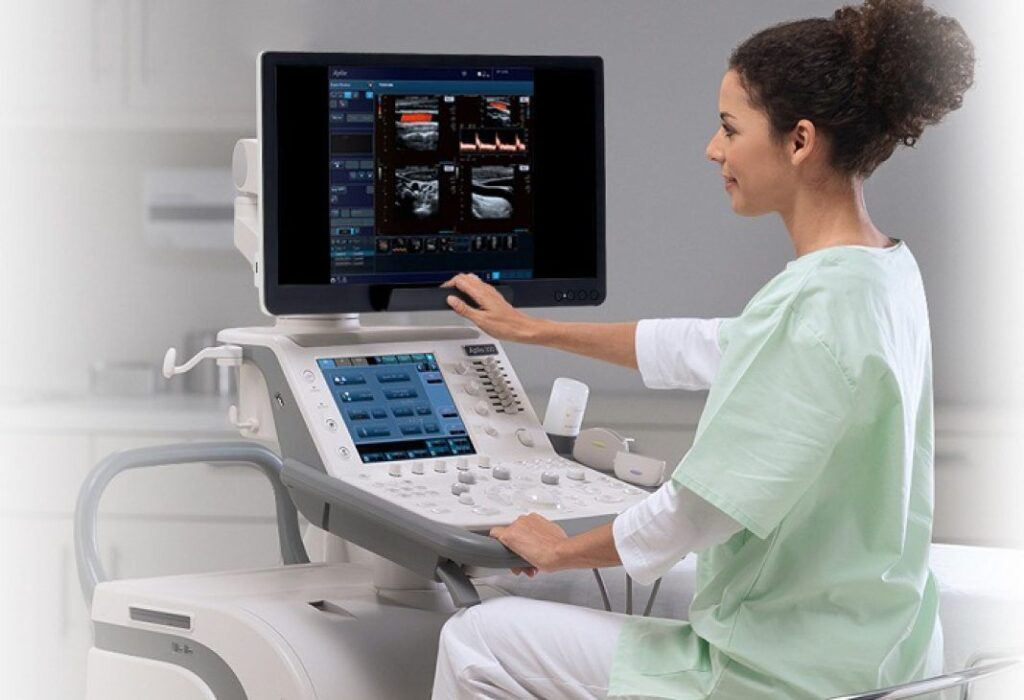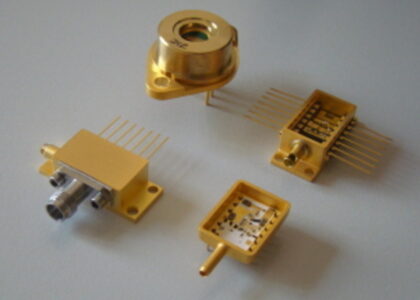
The global ultrasound biometry devices market, valued at approximately USD 167.1 million in 2021, is projected to witness significant growth, with an expected compound annual growth rate (CAGR) of 4.0%. By 2032, the market is anticipated to surpass USD 257.1 million. This growth is largely attributed to the increasing prevalence of cataracts and the expanding use of ultrasound biometry devices in surgical procedures worldwide.
Ultrasound biometry devices play a crucial role in performing precise measurements for invasive surgical procedures, particularly in ophthalmology. These devices are essential for cataract and refractive surgeries, where the precise measurement of the axial length of the eye is critical. The A-scan and B-scan techniques are the most widely used methods for these measurements, with the A-scan offering the highest level of precision.
A-scan ultrasound biometry devices are pivotal in diagnosing and treating a variety of common vision problems, such as cataracts, and are commonly used by optometric physicians and ophthalmologists. This diagnostic tool allows for accurate measurements of the eye’s length, facilitating the identification of issues and assisting in the planning of cataract surgeries. In addition to cataract procedures, A-scan devices are also used in the diagnosis of eye masses, further contributing to their growing adoption in medical practices.
The rising number of cataract surgeries, combined with advancements in ultrasound biometry technology, is expected to drive the demand for these devices in the coming years. As healthcare professionals increasingly turn to ultrasound biometry devices to improve surgical outcomes and patient care, the market is poised for robust growth in the foreseeable future.
Growing Need for Market Insights: Access Our Full Report for Thorough Analysis and Trends!
The demand for ultrasound biometry devices, which are used for measuring the eye’s physical parameters in ophthalmology, especially during cataract surgeries and in the treatment of refractive errors, is being driven by several key factors:
- Rising Incidence of Cataracts and Age-Related Eye Disorders: The increasing prevalence of cataracts, particularly among the aging population, is one of the major drivers. Cataract surgery requires precise measurements of the eye to select the right intraocular lens (IOL). As the global population ages, the demand for ultrasound biometry devices grows to assist in these surgical procedures.
- Growing Prevalence of Refractive Errors: Refractive errors such as myopia, hyperopia, and astigmatism are increasingly common worldwide. Ultrasound biometry devices help ophthalmologists to measure eye dimensions for accurate IOL placement during refractive surgeries, driving their demand in both cataract and refractive surgery procedures.
- Technological Advancements in Ultrasound Biometry Devices: Continuous innovations in ultrasound biometry technology, including the development of portable, high-resolution, and user-friendly devices, are making these devices more accessible and efficient. Advanced features such as automatic measurements, real-time feedback, and improved accuracy have expanded their applications in ophthalmology.
- Increasing Number of Eye Surgeries: The rising number of cataract surgeries, refractive surgeries, and other eye procedures has increased the need for accurate preoperative eye measurements. Ultrasound biometry devices play a critical role in ensuring optimal surgical outcomes, leading to an uptick in their demand.
- Growing Awareness and Focus on Eye Health: Increasing public awareness about eye health, especially with regards to the impact of aging and the importance of regular eye exams, is boosting the adoption of technologies that aid in the diagnosis and treatment of eye conditions. The growing emphasis on preventive eye care, driven by health campaigns and educational programs, supports the uptake of ultrasound biometry devices.
- Advancements in Non-invasive Diagnostic Tools: The preference for non-invasive, safe, and effective diagnostic techniques is pushing the adoption of ultrasound biometry devices. As patients and healthcare providers favor non-invasive methods over traditional surgical ones, ultrasound devices are gaining popularity for their ability to provide accurate measurements without the need for incision.
- Rising Healthcare Expenditure and Investment in Ophthalmic Care: Increased government and private sector spending on healthcare, particularly on improving access to advanced ophthalmic care, is fueling the growth of the market for ultrasound biometry devices. Investments in state-of-the-art equipment and healthcare infrastructure are driving the availability and usage of these devices.
- Expanding Healthcare Access in Emerging Markets: The increasing healthcare infrastructure in developing regions, such as Asia-Pacific and Latin America, is facilitating access to advanced diagnostic tools like ultrasound biometry devices. These regions have seen a surge in demand for eye care services, driving the growth of ophthalmology markets, including ultrasound devices.
- Increasing Number of Eye Care Professionals: As more ophthalmologists and optometrists enter the field and expand their practices, the demand for high-quality diagnostic and surgical equipment, including ultrasound biometry devices, is increasing. This growth in healthcare professionals also contributes to higher device adoption.
- Integration with Other Ophthalmic Devices: Ultrasound biometry devices are increasingly being integrated with other ophthalmic diagnostic tools, such as optical coherence tomography (OCT) and anterior segment analyzers, for more comprehensive assessments. This integration improves the overall patient experience and enhances diagnostic precision, which in turn boosts device demand.
These factors collectively contribute to the growing demand for ultrasound biometry devices in ophthalmology, supporting accurate diagnoses and better treatment outcomes for a variety of eye conditions.
Key Players:
General Electric; Koninklijke Philips N.V.; Siemens; TOSHIBA Pvt. Ltd.; Hitachi Medical (Hitachi, Ltd.); Shenzhen Mindray Bio-Medical Electronics Co., Ltd.; Sonosite (FUJIFILM); Esaote Spa; SAMSUNG HEALTHCARE; Konica Minolta
Key Segments Covered in the Ultrasound Biometry Devices Industry Survey:
By Product:
- Diagnostic Ultrasound
- Therapeutic Ultrasound
By Portability:
- Fixed
- Mobile
By Ultrasound Probes:
- A Scan
- B Scan
By Application:
- Radiology
- Gynecology
- Cardiologic
- Urological
- Others
By End User:
- Hospitals
- Diagnostic Centers
- Maternity Centers
- Ambulatory Surgical Centers
By Region:
- North America
- Latin America
- Europe
- East Asia
- South Asia
- Oceania
- Middle East & Africa
About Future Market Insights (FMI)
Future Market Insights, Inc. (ESOMAR certified, recipient of the Stevie Award, and a member of the Greater New York Chamber of Commerce) offers profound insights into the driving factors that are boosting demand in the market. FMI stands as the leading global provider of market intelligence, advisory services, consulting, and events for the Packaging, Food and Beverage, Consumer Technology, Healthcare, Industrial, and Chemicals markets. With a vast team of over 400 analysts worldwide, FMI provides global, regional, and local expertise on diverse domains and industry trends across more than 110 countries.
Contact Us:
Future Market Insights Inc.
Christiana Corporate, 200 Continental Drive,
Suite 401, Newark, Delaware – 19713, USA
T: +1-347-918-3531
For Sales Enquiries: sales@futuremarketinsights.com
Website: https://www.futuremarketinsights.com
LinkedIn| Twitter| Blogs | YouTube

